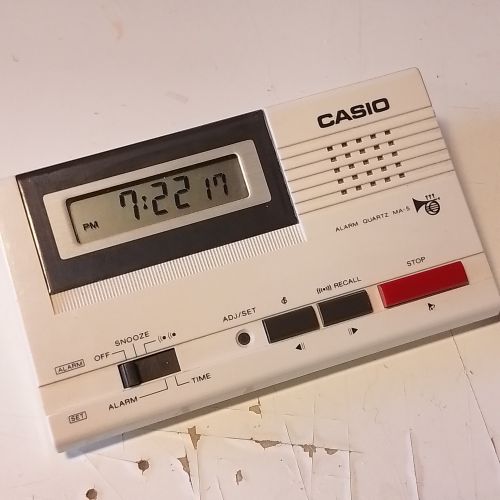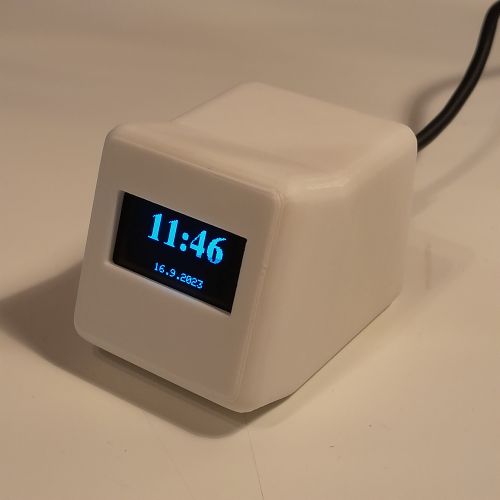Digital Clocks
Digital clocks, those ubiquitous devices that numerically display the time with precision and clarity, have become an integral part of modern life. Their development and evolution are fascinating, marking the transition from mechanical to digital technology in timekeeping.
Besides effect pedals, I've build more clocks than any other electronic devices. I build my first clock in 1993 as a christmas present for my parents. Other honorable mentions include Nixie-clock. That was fun project, but today nixie-tubes are so expensive I don't want to use it anymore. And then all the Arduino clocks. Some of them are so good I've added them to this site. Like this one with Led matrix display or this one with 7-segment led display. It's very interesting to use different display types for clocks, and it's my main method of trying out new (to me) displays. So most clocks I've build had very short lives.
Digital clock on this page is just a simple javascript exercise. If you click the clock with left mouse button the display will change its color. Click the button below to download the code, spritesheet and html boilerplate. You can freely use it as a basis for your own clock. You can add more digit-styles to the spritesheet, or change the ones already there. Use your own css-styling to canvas element and make the clock pretty and blend in to your own website design.
Brief history of digital clocks
 The history of digital clocks can be traced back to the early 20th century, but it wasn't until the 1950s and 1960s that the technology began to take a form recognizable today. The earliest digital clocks used electromechanical systems to display numbers. These systems often employed flip panels or rotating drums to show the digits, a far cry from the sleek, electronic displays we are accustomed to now.
The history of digital clocks can be traced back to the early 20th century, but it wasn't until the 1950s and 1960s that the technology began to take a form recognizable today. The earliest digital clocks used electromechanical systems to display numbers. These systems often employed flip panels or rotating drums to show the digits, a far cry from the sleek, electronic displays we are accustomed to now.
A significant leap in the development of digital clocks came with the invention of the Light Emitting Diode (LED) in the 1960s. The LED allowed for brighter, clearer displays that consumed less power, making it possible to create more practical and portable digital clocks. However, the earliest LED clocks were expensive, limiting their widespread use.
The 1970s saw the introduction of Liquid Crystal Display (LCD) technology, which further revolutionized digital clocks. LCDs were more energy-efficient than LEDs, enabling battery-powered digital watches and small clocks. This era marked the beginning of the digital clock becoming a common household item, as prices dropped and the technology became more accessible.
 The 1980s and beyond have seen continual advancements in digital clock technology, with the integration of features such as alarm functions, radio synchronization for accurate timekeeping, and smart connectivity to link with other devices. Today, digital clocks not only serve the basic function of timekeeping but also act as interfaces for smart home devices, displaying information ranging from the weather to personal schedules.
The 1980s and beyond have seen continual advancements in digital clock technology, with the integration of features such as alarm functions, radio synchronization for accurate timekeeping, and smart connectivity to link with other devices. Today, digital clocks not only serve the basic function of timekeeping but also act as interfaces for smart home devices, displaying information ranging from the weather to personal schedules.
Digital clocks have also impacted culture and design, with their numbers becoming iconic in their own right. From the straightforward red numbers of an LED bedside clock to the sleek interface of a smartwatch, the digital clock's aesthetic has influenced numerous aspects of design and technology.
The evolution of digital clocks mirrors the broader technological advancements of the past century. From mechanical gears to electronic circuits, the development of digital clocks showcases humanity's relentless pursuit of precision, efficiency, and convenience in timekeeping. As technology continues to advance, digital clocks will undoubtedly evolve further, incorporating new features and functionalities that we can only begin to imagine.
